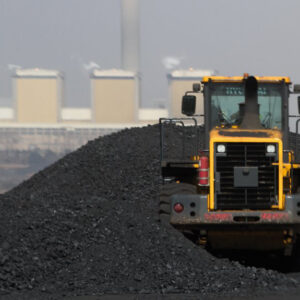Hard to believe, but some global mining and trading houses have been hard at work trying to build up their coal holding, especially coal destined to steel mills. Today we want to take a look at global coal usage but with reference mainly to the production of electricity. There are three related questions here. Who is still building new coal plants; what regions have the most operating coal plants; and where are coal plants actually being retired.
Just looking at where coal fired power generation is being added we see a huge divide between Asia versus the US and western Europe. Over the past twenty years China has quintupled its coal-fired power generation from 200,000 to over 1 million megawatts installed. And China has authorized an additional 100 new power stations in 2023 according to Reuters. But China is not alone in this coal plant construction mini boom. India, which has suffered from weak hydroelectric availability, is also planning to increase future coal capacity by over one third as is Southeast Asia. And unlike the US and Europe, none of these regions plan a significant degree of plant retirements. So if we believe all these incremental coal plants will be in service for a while, then it’s safe to say that coal demand in these regions will remain robust. China, India and Southeast Asia consume 70% of the world’s coal production, while the US and Europe consume only 10%. Those numbers show where the action is.
Let’s put this demand in the context of what we call the energy trilemma, which asserts that all countries want energy that is environmentally benign, has a secure supply, and is affordable. However, in most situations, any combination of two factors precludes the third. Take coal for example. It is “secure” in that almost every nation has commercially available access to coal or lignite either domestically or nearby. The energy produced is affordable in that the power plants can be relatively inexpensive to build and the resulting power sold cheaply. So coal-powered energy is both secure and affordable but obviously not environmentally benign. Now assume we wanted to maximize the second and third values, produce energy for the economy that is both environmentally benign and affordable. That leads us to renewable technologies like wind and solar—both widely utilized—but an exclusive reliance on these intermittent resources (in the absence of batteries) would sacrifice the security of supply.
The US has been reducing its reliance on coal. But it has replaced it mainly with domestically produced natural gas. In terms of the energy trilemma, natural gas is both secure and affordable—which implies that environmental health gets short shrift. However, in strictly CO2 emission terms, even this change from one fossil fuel-burning technology to another is an improvement for the environment.
But more importantly, we think it would be a mistake to assume that coal has no future here. Present usage levels could plateau instead of continuing to decline. This would mean coal continuing to produce about one-fifth of the nation’s electricity. And the Republican party has made it a key part of its platform to strongly support continued and expanded use of fossil fuels. At the very least this suggests a likely slow walking of plant closures and more life extensions. It’s also possible that we’re one presidential election away from actually seeing some new coal plant construction in states like Texas or Wyoming—especially if the US Supreme Court continues to limit administrative agencies like the EPA.
We think it’s a mistake to assume that Asia will begin to wean itself off of coal-fired power as the US and Europe have begun to do. It’s just as likely that we abandon all environmental pretense and recommit to utilizing readily available fossil fuels as the Republicans advocate. Meanwhile, one rationale offered for China’s spurt in building more coal-fired power generation was that it was a necessary firm or base load complement to all the intermittent renewable generation added to their grid. That’s the argument new nuclear advocates are trying to make here. But we believe there is another more universal factor at work in China and across Asia, the human response to a window of opportunity that’s perceived to be closing. The present rush to build new coal-fired power plants may be driven by a fear that these projects may soon be politically unacceptable so it’s better to build them all now. And that’s just what they’re doing.
As for the climate implications, well, you can always buy stock in an air conditioner manufacturer.




